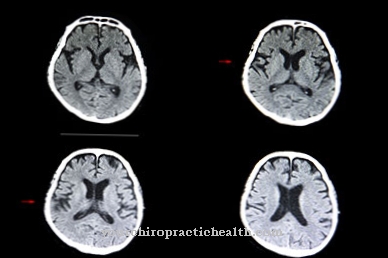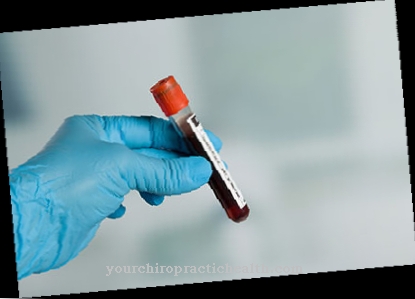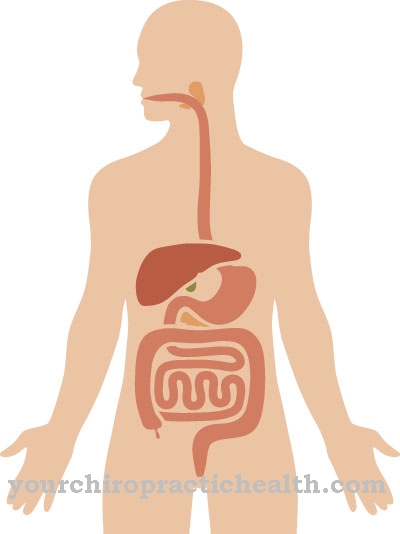The Compressio spinalis or Spinal cord contusion is the most severe of three possible degrees of severity of a spinal cord injury. It usually occurs as a result of an unstable, accident-related vertebral body fracture or due to a traumatic herniated disc. The Compressio spinalis involves irreversible neurological damage, so that it comes to persistent sensory and motor failures that cannot be remedied according to the current state of neurological medicine.
What is spinal compression?

© 4th Life Photography - stock.adobe.com
Spinal compression is a spinal cord injury in which acute or chronic pressure on the spinal nerves causes irreversible damage to the nerves. It is the most severe of three categories of spinal cord compression. The spinal compression is also known as a spinal cord squeeze.
In fact, the most severe form of spinal cord compression means a total loss of sensory and motor skills in the regions of the body that are innervated by the injured and compressed nerves. This means that muscle paralysis and complete numbness in the affected regions are the result.
Such serious backbone injuries can result from accidents with vertebral fragmentation or from an extreme herniated disc (disc prolapse). Permanent, severe compression of the nerves of the spinal cord can also result from the space occupied by a hematoma or a tumor.
causes
Compressio spinalis can be caused by external or internal factors. External influences mostly result from accidents, traffic, sports and household accidents with severe, unstable vertebral fractures or vertebral dislocation, which leads to a contusion of the spinal cord (medulla spinalis, spinal cord). In extreme cases, demineralization of the vertebral bodies due to osteoporosis or other diseases can result in an unstable vertebral fracture for no apparent reason.
External influences such as blunt injuries can cause spinal compression without a vertebral fracture. For example, bleeding in or on the spinal canal can result in severe compression of the spinal cord nerves due to the space required. Space that causes severe compression of the spinal medulla can also be caused by tumors.Other reasons for a spinal cord contusion are extreme herniated discs or, very rarely, an unintended complication of a medical intervention.
You can find your medication here
➔ Medicines for back painSymptoms, ailments & signs
Acute spinal compression is accompanied by serious neurological disorders. Sensory failures in the form of numbness in the affected body areas are symptomatic. Motor failures in affected muscle parts are just as typical. The inactivity of the muscle parts due to a lack of nervous impulses very soon leads to muscle atrophy, a breakdown of the contractile muscle cells.
The breakdown of muscle tissue is a normal process when the muscle in question is either not used or cannot be used or moved for neurological or other reasons. Typically, a spinal cord contusion leads to segmental neurological failure depending on the location of the lesion. Paraparesis or even tetraparesis often sets in, paralysis of the legs or all four extremities.
A pathologically increased reflex response in certain protective reflexes is also symptomatic, because motor neurons, which serve to self-regulate the reflexes, have failed. In this context, the pyramidal trajectory signs, which can be recognized using a series of typical reflex responses, are to be mentioned in particular.
Diagnosis & course
If spinal compression is caused by violence as a result of an accident, it is usually associated with further physical damage such as fractures, unconsciousness and similar symptoms. A diagnosis is usually only possible if the other injuries are taken into account.
The most important signs that the spinal nerves are crushed are a loss of sensory and motor skills, for example in the legs. An examination of the abilities can of course only be carried out if the other injuries of the patient, who is usually in shock, allow it.
In most of the other cases, the spinal compression develops gradually, so that the less serious stages of the commotio spinalis and the contusio spinalis are passed through first. These two preliminary stages of spinal nerve contusion are noticeable as weak neurological signs that gradually increase depending on the cause.
Complications
Compressio spinalis results in very severe and serious complications. These are usually irreversible and cannot be treated or remedied. Due to the injury to the spinal cord, the patient can no longer make normal movements and motor skills are restricted.
The quality of life decreases extremely due to the restrictions and in many cases the affected person is dependent on the help of other people. In many cases, muscle breakdown also occurs. These can be partially moved or not at all. Legs and arms are also paralyzed, so that the patient suffers from severe mobility restrictions and is usually dependent on a wheelchair.
Compressio spinalis can also cause psychological complaints that can lead to depression or suicidal thoughts. Especially young people are affected by psychological problems due to the limitations. It is not possible to treat spinal compressions medically, so that the person concerned has to live with the restrictions his entire life.
Psychiatric care is necessary for many patients. Life expectancy is not reduced if the cause of the spinal compression does not result in any further complications.
When should you go to the doctor?
If numbness and other signs of spinal compression are noticed in connection with a vertebral fracture or a severe herniated disc, an emergency doctor should be called immediately. In the event of motor failures in certain muscle groups, the person affected must also be treated immediately or should be taken directly to the nearest hospital. If the symptoms arise as a result of an accident, there is usually further physical damage such as fractures or lacerations that must be treated immediately.
The person affected or the first aiders on site should call the rescue service. In addition, first aid must be given to the injured person. After the initial treatment of the compressio spinalis, a longer hospital stay is usually indicated. Depending on how severe the injury is, in many cases the person affected depends on the help of others. Physiotherapy treatment is usually just as necessary as close medical monitoring of the injury. In the case of psychological complaints, the advice of a therapist should also be sought.
Doctors & therapists in your area
Treatment & Therapy
In any compression of the spinal nerves, the primary goal is to free the neurons from the compression pressure, provided that other injuries allow this. The therapy goal applies regardless of the severity of the compression. It cannot be determined in advance whether the nerve lesions are reversible or irreversible.
To be on the safe side, it should first be assumed that the damage is reversible. The certainty as to whether the neuronal damage is at least partially reversible often does not exist over a long period of time. In those cases in which spinal compression is slow to develop, there is a chance of reacting to the first signs.
The first symptoms usually consist of non-specific signs such as reduced sensitivity, occasionally also in "ants tingling" and in motor dysfunction. Such symptoms should be used as an opportunity to make an accurate diagnosis of the causes of the problems in order to be able to address them at an early stage.
This means that signs that indicate a developing spinal nerve compression can also be viewed as early indicators for a certain underlying disease and open up the possibility of treating the diagnosed underlying disease at an early stage.
Outlook & forecast
The Compressio spinalis has an unfavorable prognosis. The disease leads to irreparable damage, so that a cure with the current medical possibilities can be excluded. The functionality of the damaged nerves cannot be restored or taken over by other nerve fibers. Motor disorders arise that lead to a deterioration in muscle strength. Since many muscles are no longer activated, they atrophy and regress.
The general well-being decreases and the patient is often dependent on a wheelchair or help in everyday life. The spinal compression causes many changes in the life of the person affected. In addition to the physical changes, social or professional problems often arise. These worsen the general state of health. If the patient manages to adapt to the circumstances and restructure his life well, well-being increases again. A good and content life with the disease will then be possible.
Otherwise, there is a risk of psychological disorders as well as further physical impairments. The risk of developing depression or melancholy is greatly increased. Often times, thoughts of suicide arise and the meaning of life is lost. These mental obstacles reduce the prospect of an improvement in the overall situation. The patient has a significantly better prognosis if he is optimistic about life despite the adversity.
You can find your medication here
➔ Medicines for back painprevention
Direct preventive measures that would be suitable for preventing spinal compression are only possible to a limited extent. Conditional preventive measures include, for example, passive accident protection through airbags, protective clothing (e.g. back protector) and other safety systems.
Safety training in professional and sporting activities that are part of the accident-prone activities can also be counted among the indirect preventive measures because the risk of accidents and the risk of serious spinal injuries are minimized.
You can do that yourself
Self-help measures are only possible to a limited extent if there is spinal compression. In everyday life, the specifications and instructions of the doctor should be followed. Slow and gentle movements are helpful for the healing process.
The physical strain must be controlled and should not be too severe. Bad posture or a one-sided strain should also be avoided. These measures do not relieve the existing symptoms immediately, but prevent them from increasing and thus further impairments.
It is helpful if the person concerned keeps their weight in the range of normal weight. Overweight or obesity put stress on the bones and contribute to an undersupply of the nerves. If there are bruises, the healing process is slowed down as soon as the body is too heavy.
Since the disease is often associated with a loss of joie de vivre, reduced well-being and, as a result, an increase in psychological complaints, the person affected should strive for emotional stability and a stable social environment. Optimism and confidence help maintain wellbeing. The everyday processes have to be restructured and adapted to the existing possibilities. If possible, this should take place with a positive attitude and in close cooperation with people in the immediate vicinity.





.jpg)
.jpg)






.jpg)

.jpg)
.jpg)











.jpg)